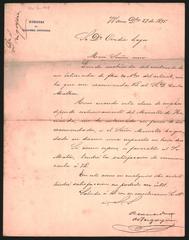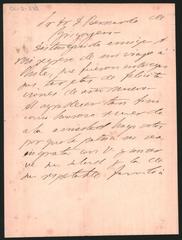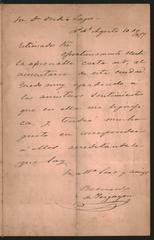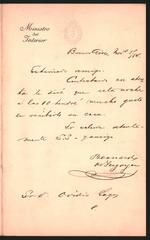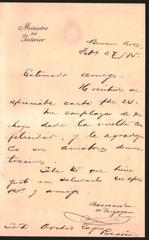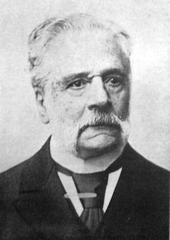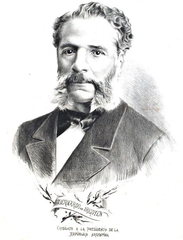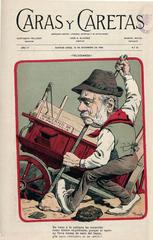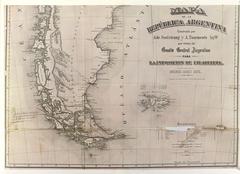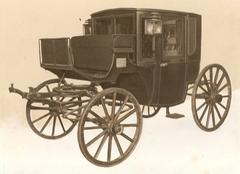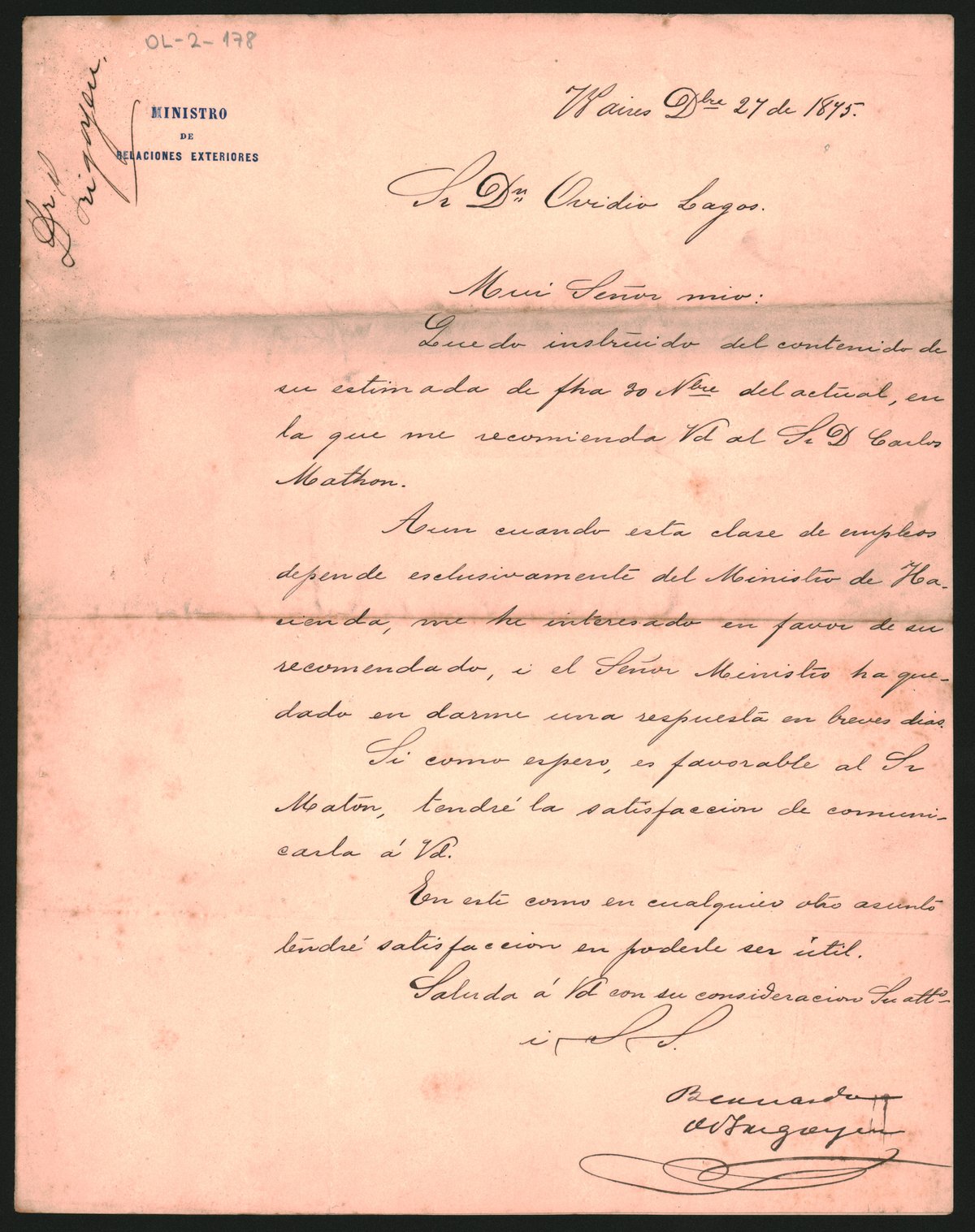
Bernardo de Irigoyen, Buenos Aires, Argentina: Visiting Hours, Tickets, and Historical Sites Guide
Date: 14/06/2025
Introduction
Bernardo de Irigoyen, a name shared by two distinct locations in Argentina, invites travelers to explore the country’s diverse history, culture, and landscapes. One is the bustling border town in the province of Misiones, renowned for its vibrant blend of Argentine and Brazilian influences, cross-border commerce, and proximity to natural reserves. The other is a tranquil rural locality in Buenos Aires Province, immersed in the traditions of the Pampas, gaucho culture, and Argentina’s agricultural heartland.
This guide offers comprehensive insights into both destinations, detailing their historical foundations, cultural and religious traditions, key attractions, visiting hours, ticketing, accessibility, travel tips, special events, and more. Whether you’re drawn to the cross-cultural vibrancy of the northeast or the rustic charm of the Pampas, Bernardo de Irigoyen stands as a gateway to authentic Argentine experiences (Municipality of Bernardo de Irigoyen official website; Misiones Province tourism page; LAC Geo on Pampas culture).
Table of Contents
- Introduction
- Early Foundations and Naming
- Historical Development
- Indigenous Heritage and Cultural Legacy
- Religious and Festive Traditions
- Architectural and Historical Sites
- Cross-Border and Multicultural Influence
- Practical Visitor Information
- Nearby Attractions
- Local Cuisine & Cultural Practices
- Must-See Landmarks
- FAQs
- Visuals & Media
- Additional Resources
- Conclusion
- Call to Action
Bernardo de Irigoyen, Misiones: History, Culture, and Visitor Guide
Early Foundations and Naming
Founded on July 11, 1921, as Barracón, the town was renamed in 1936 to honor diplomat Bernardo de Irigoyen. Its strategic location on the Argentine-Brazilian border shaped its development as a trade and transport hub (Primera Edición).
Historical and Cultural Development
Bernardo de Irigoyen’s borderland identity is pronounced. The town’s growth is closely linked to commerce and cross-border interactions, giving rise to a multicultural atmosphere where Spanish and Portuguese are widely spoken. The blend of traditions is reflected in local music, cuisine, and festivals.
Indigenous Heritage
The region has deep indigenous Guarani roots. Their influence persists in artisan crafts—baskets, masks, and jewelry—and is celebrated in cultural events that highlight music, dance, and storytelling.
Religious and Festive Traditions
Religious life is central, with notable events like the celebration of the Nativity of the Child Virgin Mary each September 8, featuring processions and community gatherings. Seasonal music festivals, especially in spring and autumn, bring together local and cross-border artists, particularly in genres such as chamamé and sertanejo (Misiones Tourism Calendar).
Key Attractions
- Borderland Experience: Explore the unique cross-border zone, where local markets and shops accept both Argentine pesos and Brazilian reais. Businesses generally operate 9:00 AM–6:00 PM.
- Lookouts and Landscape: Elevated viewpoints offer panoramic vistas of the Atlantic Forest and borderlands, accessible from 8:00 AM–7:00 PM.
- Markets and Gastronomy: Central markets (8:00 AM–5:00 PM) showcase a range of products, from yerba mate to Brazilian electronics. Sample Argentine parrilla and Brazilian feijoada at local restaurants, typically open 12:00 PM–10:00 PM.
- Cultural Events: Check local calendars for music and dance festivals. Some events may require advance ticket purchase.
- Nearby Nature: Use Bernardo de Irigoyen as a base for visiting Salto Encantado Provincial Park (8:00 AM–6:00 PM, entrance fee applies) or Parque Estadual do Turvo in Brazil for Yucumã Falls.
Practical Travel Information
- Getting There: Accessible via Ruta Nacional 14 from Posadas (350 km). Regional buses are available, but car rental is recommended. Local taxis and moto-taxis operate within the town.
- Border Crossing: Carry valid passport or ID. Customs regulations and time zone differences (Brazil may differ by one hour) apply.
- Climate: Mild year-round (15°C–22°C), with cooler nights. Spring and autumn are optimal for visiting.
Accessibility
The town offers basic accessibility in public areas; some attractions may present challenges for those with mobility issues. Inquire locally in advance.
Guided Tours & Photographic Spots
Local agencies offer guided tours of markets, culinary experiences, and nearby parks. Key photo spots include the border area, lookout points, and local festivities.
Visitor Tips
- Currency: Argentine peso is primary, but Brazilian real is often accepted.
- Language: Spanish and Portuguese dominate; English is limited.
- Safety: Low crime rate. Standard precautions suffice.
- Accommodation: Modest hotels and guesthouses available—book ahead during festivals.
- Connectivity: Good mobile and Wi-Fi coverage.
FAQs
- Visiting Hours: Markets 9:00 AM–6:00 PM; parks 8:00 AM–6:00 PM.
- Tickets: Most town sites are free; parks may charge a fee; some events require tickets.
- Accessibility: Basic; inquire for specific needs.
- Border Crossing: Valid ID required; check current regulations.
Bernardo de Irigoyen, Buenos Aires: Pampas Culture and Rural Heritage
Geographical Setting
Located in the heart of the Pampas, this Bernardo de Irigoyen is defined by sweeping plains, estancias, and meandering streams (LAC Geo). Its temperate climate and fertile land have made it a center for agriculture and livestock.
Historical and Cultural Highlights
- Naming Legacy: Named after Bernardo de Irigoyen (1822–1906), a statesman and diplomat whose Basque family’s influence remains visible in local traditions (Encyclopedia.com; CARI Diplomatic Archives).
- Gaucho Heritage: The Pampas is the birthplace of the gaucho, Argentina’s legendary horsemen. Visitors can experience asados (barbecues), folk music, and dance in local festivals.
- European Influences: Italian and Spanish immigrants in the 19th–20th centuries enriched local culture, reflected in architecture and cuisine.
Visitor Information
- Visiting Hours & Tickets: The town is open year-round; estancias and museums generally operate 9:00 AM–6:00 PM and may charge a small fee. Confirm hours and book tours in advance.
- Guided Tours & Events: Estancias and cultural centers offer tours on rural life and history. Annual festivals feature music, dance, and local foods.
- Accessibility & Transportation: Best accessed by car. Limited bus service; town is pedestrian-friendly.
- Photographic Spots: Capture the vast Pampas, historic ranches, and vibrant festivals.
Local Cuisine
Enjoy Pampas specialties:
- Asado: Grilled meats are central to local gatherings.
- Empanadas: Savory pastries with diverse fillings.
- Dulce de leche and Sweets: Popular desserts (Wandering Wheatleys).
Must-See Landmarks
- Historic Estancias: Experience traditional ranch life and colonial-era architecture.
- Local Church: A focal point for religious and community events.
- Monuments & Squares: Honoring local and national figures.
FAQs
- Visiting Hours: Open year-round; specific sites usually 9:00 AM–6:00 PM.
- Tickets: Outdoor areas are free; some attractions may charge.
- Tours: Available at estancias and cultural centers.
- Getting There: Car recommended; limited public transport.
- Best Time to Visit: Spring (Sep–Nov) and autumn (Mar–May) for pleasant weather.
The Obelisco de Buenos Aires: A City Icon
History and Significance
The Obelisco, designed by Alberto Prebisch and inaugurated in 1936, stands at the intersection of Avenida 9 de Julio and Avenida Corrientes. It commemorates the founding of Buenos Aires and serves as a focal point for public gatherings.
Visiting Information
- Accessibility: The plaza is open 24/7; the monument itself is not open for tours or climbs.
- Tickets: No entrance fee required.
- Events: Plaza hosts city celebrations and festivals.
- Photography: Best at sunset and nighttime when illuminated; nearby terraces offer excellent views.
Practical Tips
- Getting There: Accessible via Subte (Independencia or Lima stations), buses, and main thoroughfares.
- Accommodation: Options range from luxury hotels (e.g., Scala Hotel Buenos Aires) to hostels.
- Dining: Enjoy nearby parrillas, cafés, and international cuisine.
- Safety: Generally safe, but remain vigilant in crowds.
- Currency: Argentine peso; credit cards widely accepted, but cash is useful.
- Transportation: SUBE card for metro/buses; taxis and ride-shares available.
- Language: Spanish is dominant; basic English in tourist areas.
- Weather: Pack layers for June; expect 8–15°C (46–60°F).
Nearby Attractions
- Avenida 9 de Julio: The world’s widest avenue.
- San Telmo: Tango and antiques.
- Plaza de Mayo: Historic and political heart.
- Teatro Colón: World-class opera and performances.
- Puerto Madero: Modern dining and nightlife.
FAQs
- Can you enter the Obelisco? No, interior access is closed.
- Are there entrance fees? No, the plaza is free to visit.
- Best time to visit? Early morning, sunset, or nighttime.
- Guided tours? Yes, many city tours include the Obelisco.
Visuals & Media
For images, visit local and provincial tourism websites. Recommended alt texts:
- “Bernardo de Irigoyen borderland market”
- “Pampas landscape near Buenos Aires Bernardo de Irigoyen”
- “Historic estancia in the Pampas”
- “Obelisco de Buenos Aires at sunset”
Additional Resources
- Municipality of Bernardo de Irigoyen official website
- Misiones Province tourism page
- LAC Geo, Cultural Landscape of Argentina
- Primera Edición, Anniversary of Bernardo de Irigoyen
- CARI, Diplomatic Archives on Bernardo de Irigoyen
- Misiones Tourism Calendar
- Argentinaxplora, Geography Facts Argentina
- Wandering Wheatleys, Buenos Aires Travel Tips
Conclusion
Bernardo de Irigoyen, whether encountered in the dynamic Misiones borderlands or the serene Pampas of Buenos Aires Province, provides a rich tapestry of Argentine culture, history, and hospitality. The Misiones town thrives as a cross-cultural gateway, while its Pampas counterpart offers tranquil rural experiences and deep-rooted traditions. Both are ideal for travelers seeking authentic festivals, local cuisine, artisan markets, and excursions into Argentina’s diverse landscapes.
Call to Action
Ready to explore Bernardo de Irigoyen? Download the Audiala app for up-to-date guides, event information, and exclusive travel tips. Plan your visit around local festivals, enjoy immersive experiences, and discover the multifaceted spirit of Argentina’s heartland and borderlands.
